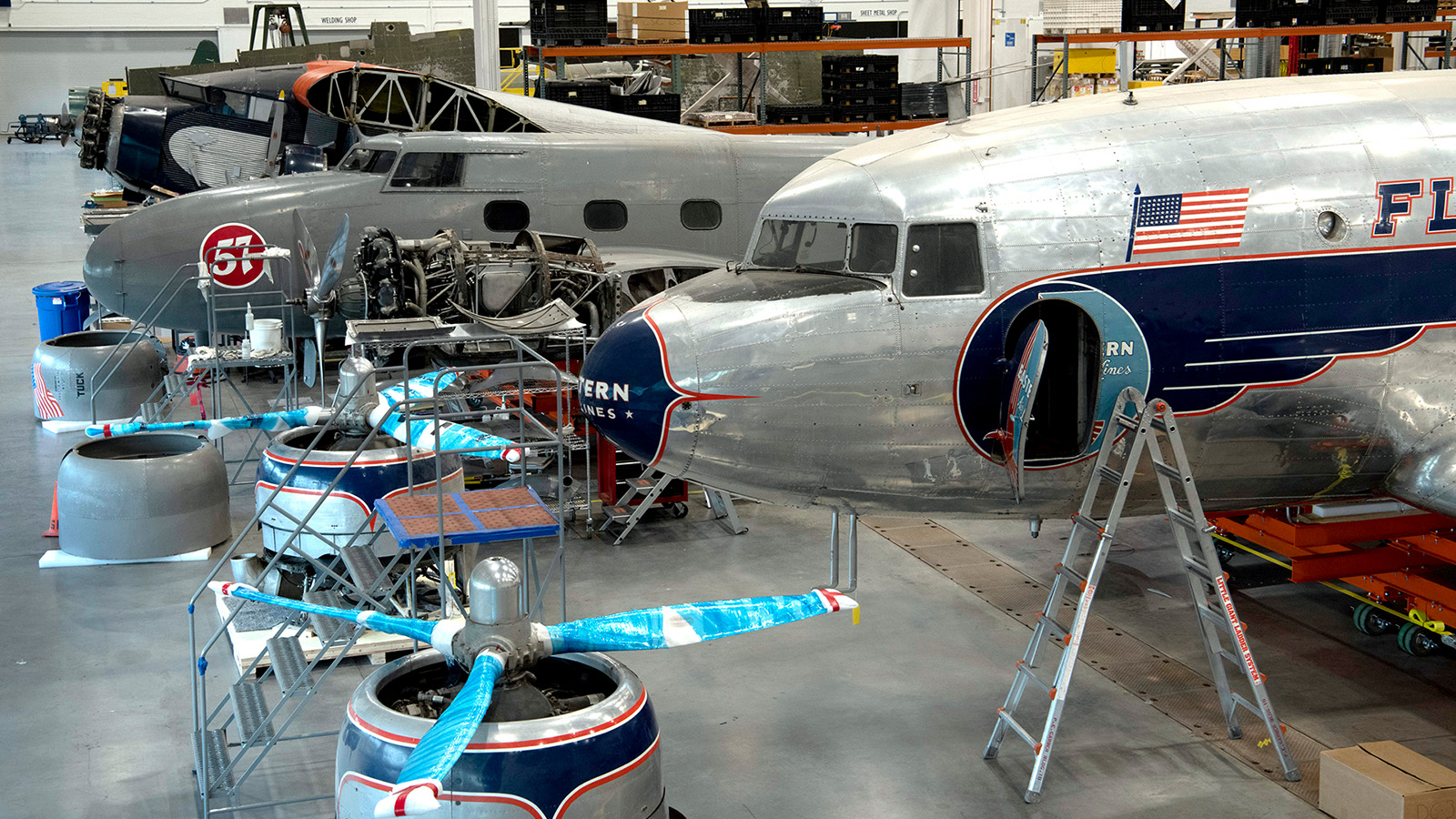The FAA Airframe and Power Plant (A&P) mechanic’s certification Luke Jones earned thanks to Embry-Riddle in 2007 has opened doors. It even puts him in the position of opening the wings of vintage aircraft from around the world.
For almost six years, he has worked at Smithsonian’s National Air and Space Museum as a restoration shop supervisor. From the Mary Baker Engen Restoration Hangar at the Steven F. Udvar-Hazy Center, his work can shift from Microsoft Word and Excel to hands-on supervision of sheet metal, hydraulics and electrical system repair and fabrication.
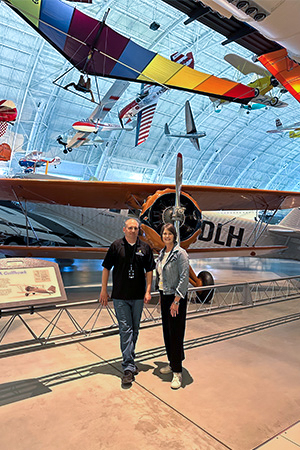
As so many aviation careers do, his interest started at airshows and trips to the airport with his father and sister. One particular visit made a lasting impression. “The first aircraft I sat in was a World War II Corsair,” he says. “The mechanic was outside washing it and let us crawl into the cockpit.”
He was hooked. “I love the aircraft,” he says. “I love the engineering. I don’t fly, but I won’t work on a plane unless I’m willing to fly in it.”
He began restoring items as a boy, watching his father. Even off the clock, he still tinkers. He is currently restoring a World War II-era bicycle.
‘I jumped out of planes in the Army. Somehow, I knew I would always end up back with aircraft.’
After a stint in the Army, Jones restored automobiles. When he heard about Embry-Riddle as an immersive aviation school, he decided to study airframe mechanics and aircraft maintenance technology. Today, he is grateful for that decision. “Having Riddle on my résumé has opened more doors than anything else,” he says.
One of those early doors was at the Mid-Atlantic Air Museum in Reading, Pennsylvania, where he applied for a summer job. Director Russ Strine (’74 ) spotted the shared alma mater on his résumé and offered him a full-time job. Jones began restoring and maintaining their collection, from a 1911 Curtiss Headless Pusher to a 1972 Piper Seneca.
Pre-Smithsonian, his favorite restoration was a World War II trainer, the North American SNJ-4 owned by the Fagen Fighters WWII Museum in Minnesota. The owners were exacting, and that’s the way Jones likes it.
“I’m a purist through and through,” he says. “My wife has an archival studies degree, and she was able to find an SNJ-4 photo in the National Archives that the owner chose to use. In the photo was nose art, ‘Bundle Buggy,’ and just forward of that ‘KAT.’ The museum allowed me to put KATY, our daughter’s name, on the nose.”
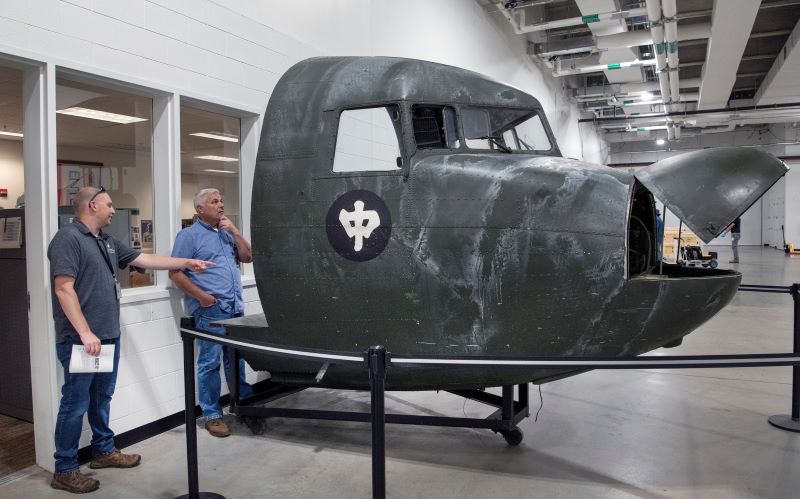
World War II planes hold a special fascination for Jones. He is a reenactor and history buff who reads widely about the era, even delving into original manuals. His job brings him even closer to history sometimes. “There’s nothing like looking into a wing that hasn’t been opened up in 70 years and finding someone’s signature in there,” he says.
The wing interiors of old planes reveal other surprises, as Jones learned in restoring a Lincoln Standard biplane. “We opened the wings to redo the fabric and discovered orange crates for wood repairs and flattened out metal mosquito sprayers used as sheet metal repairs — all evidence of its barnstorming days.”
He particularly enjoys it when veterans and the families of people connected with displays visit. “I call myself a restoration mechanic,” he says. “At the Smithsonian, we’re here to preserve. We’re here to share.”
Jones works inside a visual timeline of aviation, from the paper planes displayed at the entrance of Udvar-Hazy, which he calls tiny works of art, to history-making planes. His “office décor” in the hangar includes Chinese festival kites, a rifle that belonged to Charles Lindbergh, and a mounted and meticulously re-whiskered Gilmore the lion (the famous passenger to aviator Roscoe Turner in the 1930s). The biggest item currently in the hangar is the Boeing B-29 bomber Enola Gay with a 141-foot wingspan.
Arriving at a dark hangar in the early morning can make him feel haunted by history. “We have the Enola Gay, and we keep her lit 24/7,” he says. “Looking into the glowing nose of the Enola Gay in a pitch-black hangar is incredible and spooky at the same time.”
A $900-million overhaul is good for job security
It is a hectic time for his shop as the National Air and Space Museum progresses in its $900-million overhaul. “Every artifact comes back to our shop for cleaning, documentation of any damage and restoration, for some, to flying condition,” he says.
His team of 21 technicians and artisans do most of the work in-house. Whenever possible, they work with original drawings, glues, woods and other materials, down to buttons. “We have wood, fabric, metal composites and mylar off satellites,” Jones says.
Replicating every component of a vintage plane is not always possible, but the Smithsonian’s contacts throughout the world yield extraordinary resources. However, the shop does some fabrication, including 3D printing.
“We have water jets, modern laser welders, a complete machine shop, paint shops,” he says. “The cool thing is, every time we make something, we stamp or laser-etch ‘NASM’ on that piece so future generations know we did our best to create the part from original drawings.”
Attention to detail has a practical as well as historical value. “We 3D scan every plane to determine how to fit, hang and rig it in the museum. Taking a 70-year-old aircraft and figuring out how to hang it for the next 50 years requires a knowledge of structure and the integrity of the aircraft.”
The museum considers every possibility, from earthquake safety to whether the constant vibration of nearby elevators might cause any risk to the aircraft or rigging fixtures. Displays are carefully designed to avoid any contact with over-enthusiastic visitors.
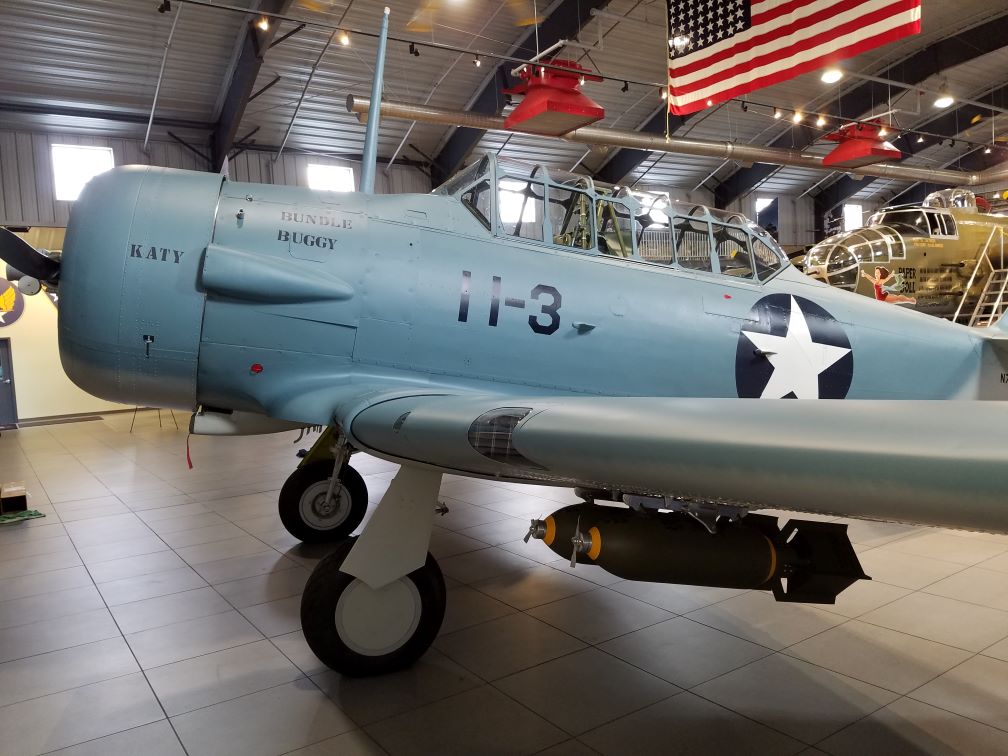
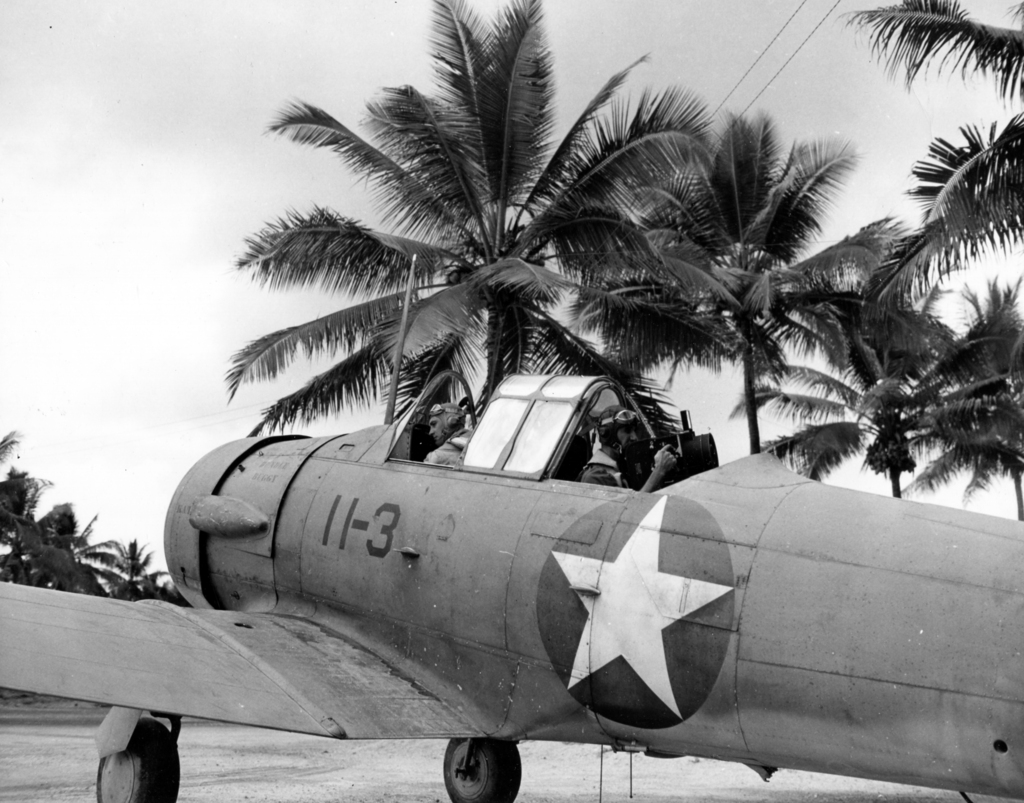
‘My daughter teases me because my favorite plane changes every time she asks.’
Another early love for Jones is the 1935 Hughes H-1 Racer. Not only does he admire the beauty of its polished aluminum and flush rivets, he points out that it was the last civilian aircraft to break speed records.
“When I actually got to put my hands on it, I’m pretty sure I was drooling,” Jones says.
Other major restorations include a Lincoln Standard biplane that never saw combat and the B-26 Marauder “Flak-Bait” that survived 207 combat missions during World War II, with no crew members lost. The plane has hundreds of holes and embedded shrapnel.
Although the museum is a point of national pride, it features international aircraft, too. There is a Heinkel He 219 German night fighter and a Russian plane pulled from a lake.
Another conservation and restoration that he eagerly anticipates is a Sikorsky JRS-1 that survived Pearl Harbor. “It was sitting on the ramp on Dec. 7 with bombs dropping all around it,” Jones says. “It actually went up that afternoon, searching for carriers. It is gorgeous.”
Japanese aircraft are on his wish list. “I am chomping at the bit to have a World War II Japanese aircraft in the hangar to work on.”
The beauty of the machines and the stories behind them make the painstaking and physically demanding work worthwhile to Jones and his team. “We have engineering interns over the summer,” Jones says. “As they get scraped and cut and cramped, working in awkward positions, I call it payback and tell them to keep that in mind when they design things.” It’s natural to focus on the exploits of heroic pilots, but for Jones, engineers deserve equal admiration. “Guys sat down behind a desk and from their imagination drew aircraft that broke records. It’s nice to honor them and remember what they were able to do.”
